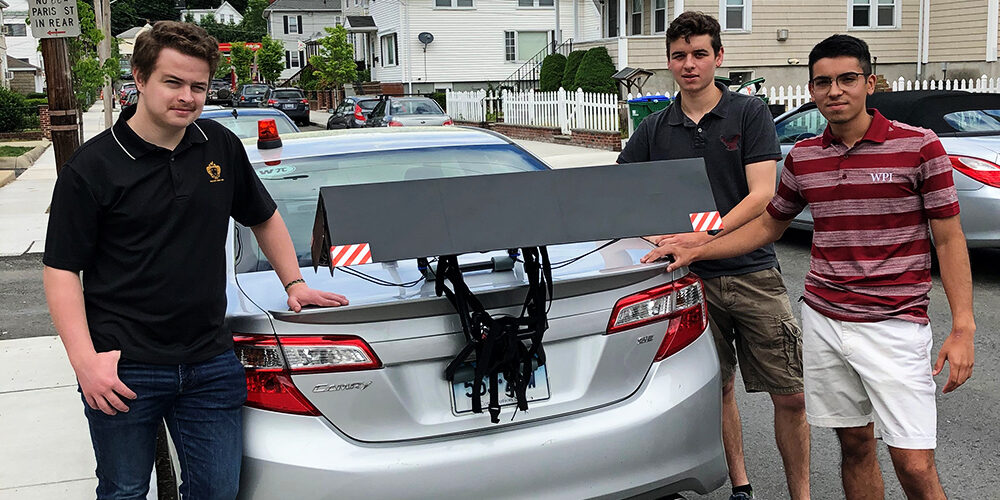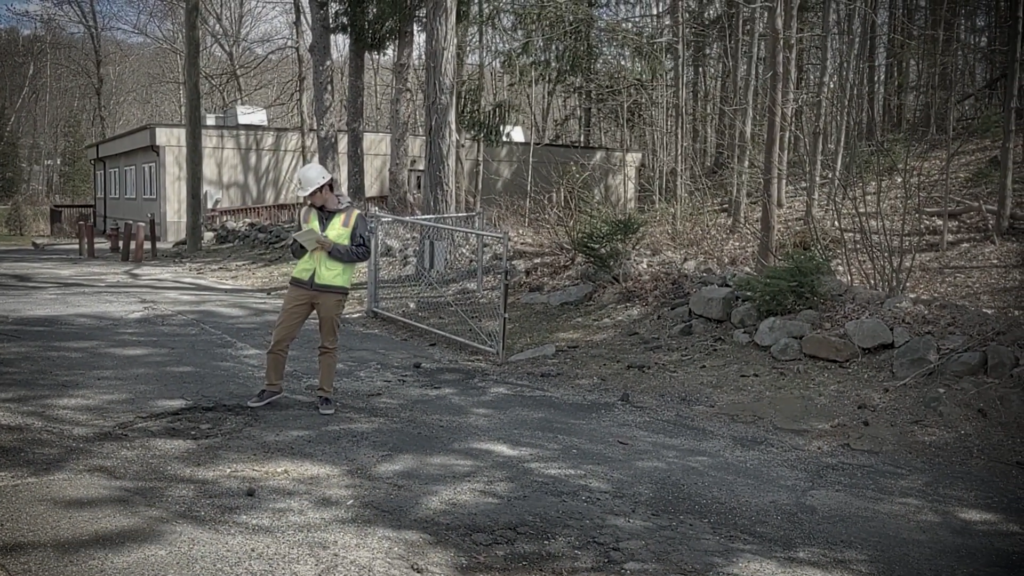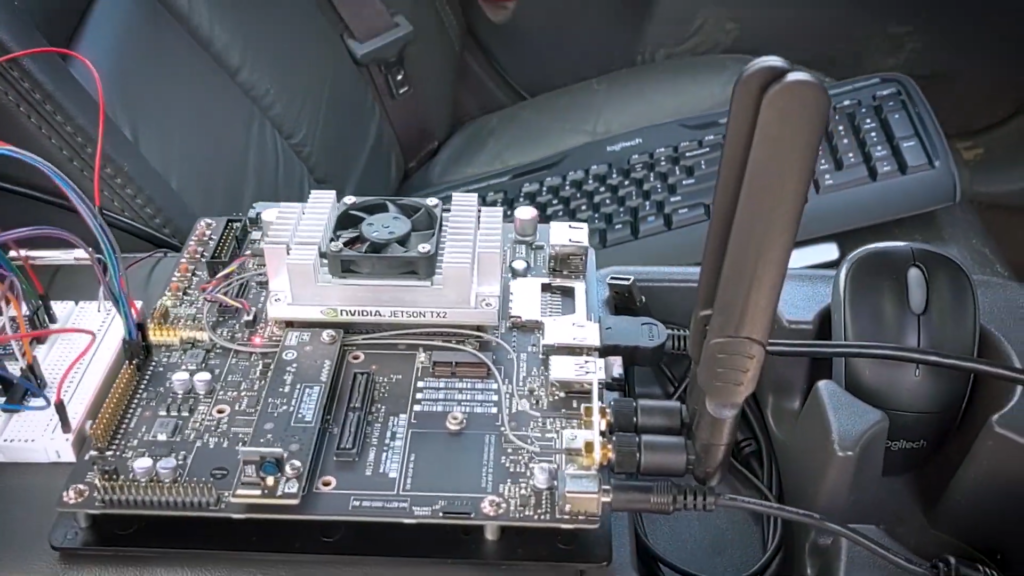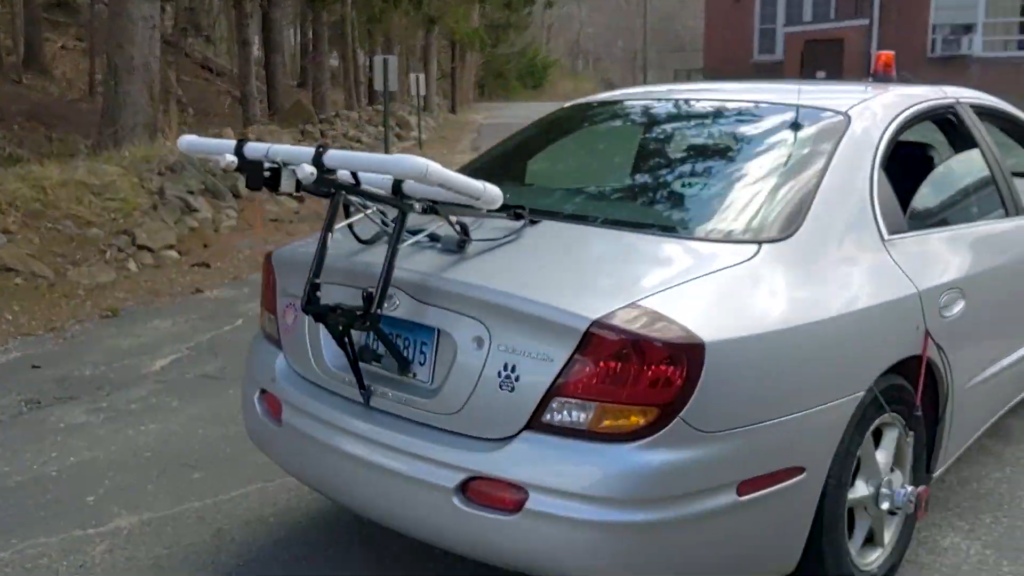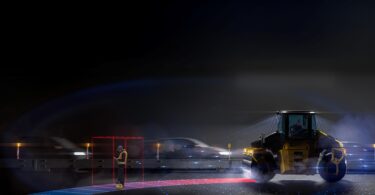First place team of SICK’s TiM$10K Challenge creates product to automate the process of road maintenance for local governments
 From advanced manufacturing to automated vehicles, engineers are using LiDAR to change the world as we know it. For the second year, students from across the country submitted projects to SICK, Inc.’s annual TiM$10K Challenge. The first place team hails from Worcester Polytechnic Institute (WPI) in Worcester, Massachusetts.
From advanced manufacturing to automated vehicles, engineers are using LiDAR to change the world as we know it. For the second year, students from across the country submitted projects to SICK, Inc.’s annual TiM$10K Challenge. The first place team hails from Worcester Polytechnic Institute (WPI) in Worcester, Massachusetts.
The team comprised of undergraduate seniors, Daniel Pelaez and Noah Budris, and undergraduate junior, Noah Parker. With the help of their academic advisor, Dr. Alexander Wyglinski, Professor of Electrical Engineering and Robotics Engineering at WPI, the team took first place in the 2020 TiM$10K Challenge with their project titled ROADGNAR. The ROADGNAR is a mobile and autonomous pavement quality data collection system.
So what is the TiM$10K Challenge? In this challenge, SICK reached out to universities across the nation that were looking to support innovation and student achievement in automation and technology. Participating teams were supplied with a SICK 270° LiDAR, a TiM, and accessories. They were challenged to solve a problem, create a solution, and bring a new application that utilizes the SICK scanner in any industry.
The History of ROADGNAR
Around the United States, many of the nation’s roadways are in poor condition, most often from potholes and cracks in the pavement, which can make driving difficult. Many local governments agree that infrastructure is in need of repair, but with a lack of high-quality data, inconsistencies in damage reporting, and an overall lack of adequate prioritization, this is a difficult problem to solve.
Pelaez, Parker, and Budris first came up with the idea of ROADGNAR before they had even learned of the TiM$10K Challenge. They noticed that the roads in their New England area were in poor condition, and wanted to see if there was a way to help solve the way road maintenance is performed.
In their research, they learned that many local governments use outdated and manual processes. Many send out workers to check for poor road conditions, who then log the information in notebooks. The team began working on a solution to help solve this problem.
It was at a career fair that Pelaez met a SICK representative, who encouraged him to apply to the TiM$10K Challenge. Using SICK’s LiDAR technology, the ROADGNAR takes a 3D scan of the road and the data is then used to determine the exact level of repair needed.
How ROADGNAR Works
ROADGNAR collects detailed data on the surface of any roadway, while still allowing for easy integration onto any vehicle. With this automated system, road maintenance can become a faster, more reliable, and more efficient process for towns and cities around the country.
ROADGNAR solves this problem through two avenues: hardware and software. The team designed two mounting brackets to connect the system to a vehicle. The first, located in the back of the vehicle, supports a LiDAR scanner. The second is fixed in line with the vehicle’s axle and supports a wheel encoder, which is wired to the fuse box.
“It definitely took us a while to figure out a way to power ROADGNAR so we wouldn’t have to worry about it shutting off while the car was in motion,” said Parker.
Also wired to the fuse box is a GPS module within the vehicle itself. Data transfer wires are attached to these three systems and connected to a central processing unit within the vehicle.
When the car is started, all connected devices turn on. The LiDAR scanner collects road surface data, the wheel encoder tracks an accurate measurement of the distance travelled by the vehicle, and the GPS generates geo-tags on a constant basis. All this data is stored in the onboard database, where a monitor presents it all to the user. The data is then stored in a hard drive.
Roadblocks in the Journey
Much like the roads in their Massachusetts town, the creation process of ROADGNAR was not without its challenges. The biggest problem took the form of the COVID-19 pandemic, which hit the ROADGNAR team in the middle of development. Once WPI closed to encourage its students and faculty to practice social distancing, the team was without a base of operations.
“When the Coronavirus closed our school, we were lucky enough to live pretty close to each other,” said Paleaz. “We took precautions, but were able to come together to test and power through to finish our project.”
Integrating LiDAR into the car was also a challenge. Occasionally, the LiDAR would shut off when the car began moving. The team had to take several measures to keep the sensor online, often contacting SICK’s help center for instruction.
“One of the major challenges was making sure we were getting enough data on a given road surface,” said Budris. “At first we were worried that we wouldn’t get enough data from the sensor to make ROADGNAR feasible, but we figured that if we drove at a slow and constant rate, we’d be able to get accurate scans.”
What the Future Holds for Automating Road Maintenance
With the challenge complete, Pelaez, Budris, and Parker are looking to turn ROADGNAR into a genuine product. They have already contacted an experienced business partner to help them determine their next steps. They are now interviewing with representatives from various Department of Public Works throughout Massachusetts and Connecticut. Thirteen municipalities have indicated that they would be extremely interested in utilizing ROADGNAR, as it would drastically reduce the time needed to assess all the roads in the area.
The trio is excited to see how different LiDAR sensors can help refine ROADGNAR into a viable product.
“We’d like to keep the connection going,” explained Pelaez. “If we can keep the door open for a potential partnership between us and SICK, that’d be great.”
Register for the 2020-2021 TiM$10K Challenge
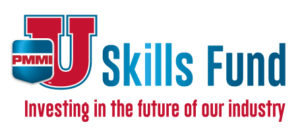
SICK is now accepting entries for the TiM$10K Challenge for the 2020-2021 school year! Student teams can register online by September 14, 2020. Student teams are encouraged to use their creativity and technical knowledge to incorporate the SICK LiDAR for any industry in any application. Advisors/professors are allowed to guide the student teams as required.
This contest was supported by PMMI Foundation’s U Skills Fund. PMMI Foundation works to grow awareness of careers in packaging and processing, providing assistance to schools and programs that develop students to excel in the industry.


